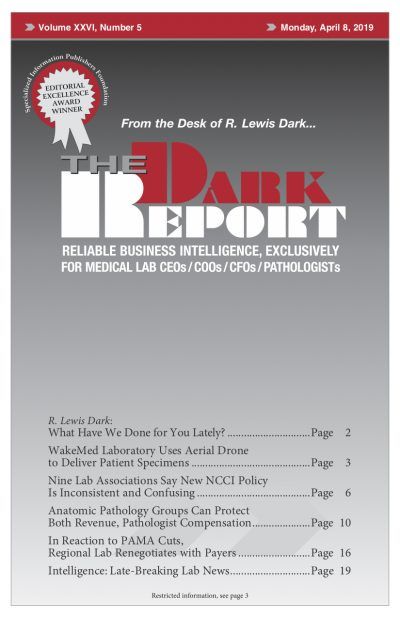This is an excerpt from a 1,550-word article in the April 8, 2019 issue of THE DARK REPORT. The full article is available to members of The Dark Intelligence Group. CEO SUMMARY: For two years, clinical lab professionals at WakeMed Health and Hospitals have tested the use of aerial drones to transport patient specimens from […]
To access this post, you must purchase The Dark Report.


